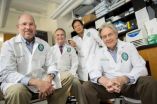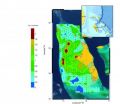(Press-News.org) Today, nearly 700,000 people in the U.S. are living with a brain tumor, and yet, when it comes to pinpointing causes or risk factors, scientists are still searching for answers.
"Right now, we don't know who, we don't know when, and we don't know why people develop brain tumors," said Elizabeth M. Wilson, MNA, President and CEO, American Brain Tumor Association. "It's frustrating for the brain tumor community, and it's why the American Brain Tumor Association funds research to pursue answers to these questions, and it's why we host this national conference to provide answers families desperately seek."
At the American Brain Tumor Association (ABTA) annual Patient and Family Conference in Chicago, July 25-26, Jill Barnholtz-Sloan, PhD, Associate Professor, Case Comprehensive Cancer Center, Case Western Reserve University School of Medicine, will be the keynote speaker and provide an update on possible causes and risk factors for brain tumors.
As Dr. Barnholtz-Sloan explains, many environmental and genetic risk factors have been studied, but researchers have not uncovered a risk factor that accounts for a large number of brain tumors. "Unlike the strong correlation between smoking and lung cancer, we just haven't found a specific risk factor like that for brain tumors," said Dr. Barnholtz-Sloan. "We have determined that ionizing radiation to the head is a risk factor when received in therapeutic doses, but even in those cases, the risk of developing a brain tumor is low."
While this is the only known risk factor, Dr. Barnholtz-Sloan says, "I want to reassure people that their brain tumor or their child's tumor is not the result of anything we currently know about that they have been exposed to or done, including using cell phones."
Recent studies do not show proof there of an association between brain tumors and cell phone use among adults. With worldwide cellphone use increasing, researchers would Brain Tumor Causes and Risk Factors—page two
expect a clear increase in brain tumor incidence over time, and studies show there is none.
Other unproven causes of brain tumors include: power lines, cigarette smoking, most forms of diagnostic ionizing radiation, head trauma, exposure to air pollutants, and alcohol consumption. Despite ruling out these and other environmental and genetic risk factors, researchers still don't know what factors may cause brain tumors.
INFORMATION:
ABOUT THE ABTA PATIENT AND FAMILY CONFERENCE
The American Brain Tumor Association's conference annually brings together brain tumor experts, researchers, patients, families and caregivers with the goal of improving the lives of people living with a brain tumor. This year's theme, "Providing and Pursuing Answers: Advances in Research, Treatment and Care" describes the ABTA's mission to be a leader in providing and pursuing the answers that brain tumor patients and their families seek. Throughout the conference, renowned brain tumor experts will cover a wide variety of topics covering new research and treatment options and important quality of life issues.
The ABTA's 2014 patient and family conference will take place July 25-26 at the Renaissance Chicago O'Hare Suites Hotel, just minutes away from Chicago's O'Hare International Airport. To learn more or register, visit http://www.braintumorconference.org.
ABOUT THE AMERICAN BRAIN TUMOR ASSOCIATION
Founded in 1973, the American Brain Tumor Association was first and is now the only national organization committed to funding brain tumor research and providing support and education programs for all tumor types and all age groups. For more information, visit http://www.abta.org or call 800-886-ABTA (2282).
About Case Western Reserve University School of Medicine
Founded in 1843, Case Western Reserve University School of Medicine is the largest medical research institution in Ohio and is among the nation's top medical schools for research funding from the National Institutes of Health. The School of Medicine is recognized throughout the international medical community for outstanding achievements in teaching. The School's innovative and pioneering Western Reserve2 curriculum interweaves four themes--research and scholarship, clinical mastery, leadership, and civic professionalism--to prepare students for the practice of evidence-based medicine in the rapidly changing health care environment of the 21st century. Nine Nobel Laureates have been affiliated with the School of Medicine.
Annually, the School of Medicine trains more than 800 MD and MD/PhD students and ranks in the top 25 among U.S. research-oriented medical schools as designated by U.S. News & World Report's "Guide to Graduate Education." The School of Medicine's primary affiliate is University Hospitals Case Medical Center and is additionally affiliated with MetroHealth Medical Center, the Louis Stokes Cleveland Department of Veterans Affairs Medical Center, and the Cleveland Clinic, with which it established the Cleveland Clinic Lerner College of Medicine of Case Western Reserve University in 2002. http://casemed.case.edu
About Case Comprehensive Cancer Center
Case Comprehensive Cancer Center is an NCI-designated Comprehensive Cancer Center located at Case Western Reserve University. The center, which has been continuously funded since 1987, integrates the cancer research activities of the largest biomedical research and health care institutions in Ohio – Case Western Reserve, University Hospitals (UH) Case Medical Center and the Cleveland Clinic. NCI-designated cancer centers are characterized by scientific excellence and the capability to integrate a diversity of research approaches to focus on the problem of cancer. It is led by Stanton Gerson, MD, Asa and Patricia Shiverick- Jane Shiverick (Tripp) Professor of Hematological Oncology, director of the National Center for Regenerative Medicine, Case Western Reserve, and director of the Seidman Cancer Center at UH Case Medical Center.
Brain tumor causes and risk factors elude scientists
Experts at the American Brain Tumor Association's annual conference report findings and dispel myths
2014-07-25
ELSE PRESS RELEASES FROM THIS DATE:
Is Europe putting cancer research at risk?
2014-07-25
The European Society for Medical Oncology (ESMO), the leading pan-European association representing medical oncology professionals, has expressed concern that the proposed EU General Data Protection Regulation [1] could make cancer research impossible and add a significant burden to both doctors and cancer patients.
The proposed wording of the regulation [2] stipulates 'explicit and specific patient consent', meaning that researchers would have to approach patients every single time research is planned in order to consult their data or use tissue samples stored for research ...
Informed consent: False positives not a worry in lung cancer study
2014-07-25
PROVIDENCE, R.I. [Brown University] — The U.S. Preventive Services Task Force recently recommended computerized tomography (CT) lung screening for people at high risk for cancer, but a potential problem with CT is that many patients will have positive results on the screening test, only to be deemed cancer-free on further testing. Many policymakers have expressed concern that this high false-positive rate will cause patients to become needlessly upset. A new study of National Lung Screening Trial participant responses to false positive diagnoses, however, finds that those ...
Exposure to dim light at night may make breast cancers resistant to tamoxifen
2014-07-25
PHILADELPHIA — For rats bearing human breast tumors, exposure to dim light at night made the tumors resistant to the breast cancer drug tamoxifen, according to data published in Cancer Research, a journal of the American Association for Cancer Research. The negative effects of dim light exposure on tamoxifen treatment were overcome by giving rats a melatonin supplement during the night.
"Resistance to tamoxifen is a growing problem among patients with hormone receptor-positive breast cancer," said Steven M. Hill, PhD, professor of structural and cellular biology and the ...
Total darkness at night is key to success of breast cancer therapy -- Tulane study
2014-07-25
Exposure to light at night, which shuts off nighttime production of the hormone melatonin, renders breast cancer completely resistant to tamoxifen, a widely used breast cancer drug, says a new study by Tulane University School of Medicine cancer researchers. The study, "Circadian and Melatonin Disruption by Exposure to Light at Night Drives Intrinsic Resistance to Tamoxifen Therapy in Breast Cancer," published in the journal Cancer Research, is the first to show that melatonin is vital to the success of tamoxifen in treating breast cancer.
Principal investigators and ...
Zerenex™ (ferric citrate) long-term Phase 3 study results published in JASN
2014-07-25
New York, NY - July 24, 2014 -- Keryx Biopharmaceuticals, Inc. (Nasdaq:KERX) (the "Company") announced the publication of results from the long-term, randomized, active control Phase 3 study of Zerenex (ferric citrate), the Company's investigational oral ferric iron-based phosphate binder, for the treatment of hyperphosphatemia in patients with end-stage renal disease (ESRD) on dialysis. The PERFECTED study (PhosphatE binding and iRon delivery with FErric CiTrate in EsrD) was published online today in the Journal of the American Society of Nephrology (JASN).
This Phase ...
New research suggests Saharan dust is key to the formation of Bahamas' Great Bank
2014-07-25
MIAMI – A new study suggests that Saharan dust played a major role in the formation of the Bahamas islands. Researchers from the University of Miami (UM) Rosenstiel School of Marine and Atmospheric Science showed that iron-rich Saharan dust provides the nutrients necessary for specialized bacteria to produce the island chain's carbonate-based foundation.
UM Rosenstiel School Lewis G. Weeks Professor Peter Swart and colleagues analyzed the concentrations of two trace elements characteristic of atmospheric dust – iron and manganese – in 270 seafloor samples collected along ...
Overweight and obese preschoolers lose more weight when parent is also treated
2014-07-24
BUFFALO, N.Y. – Primary care treatment of overweight and obese preschoolers works better when treatment targets both parent and child compared to when only the child is targeted, according to research published this week in Pediatrics and conducted at the University at Buffalo and Women and Children's Hospital of Buffalo.
Children enrolled in this study were overweight or obese and had one parent who participated in the study who also was overweight or obese, according to body mass index (BMI) measurements, calculated based on height and weight.
During the course of the ...
NYSCF scientists one step closer to cell therapy for multiple sclerosis patients
2014-07-24
NEW YORK, NY (July 24, 2014) – Scientists at The New York Stem Cell Foundation (NYSCF) Research Institute are one step closer to creating a viable cell replacement therapy for multiple sclerosis from a patient's own cells.
For the first time, NYSCF scientists generated induced pluripotent stem (iPS) cells lines from skin samples of patients with primary progressive multiple sclerosis and further, they developed an accelerated protocol to induce these stem cells into becoming oligodendrocytes, the myelin-forming cells of the central nervous system implicated in multiple ...
Study indicates large raptors in Africa used for bushmeat
2014-07-24
Bushmeat, the use of native animal species for food or commercial food sale, has been heavily documented to be a significant factor in the decline of many species of primates and other mammals. However, a new study indicates that more than half of the species being consumed are birds, particularly large birds like raptors and hornbills.
"By surveying not only the meat made available for sale but the meat that is being eaten inside the forest by hunters and brought to villages for consumption, we noted a significant percentage attributed to bird species," said Bethan ...
New study draws links between wildlife loss and social conflicts
2014-07-24
Citing many sobering examples of how wildlife loss leads to conflict among people around the world, a new article co-authored by Wildlife Conservation Society (WCS) Health & Ecosystems: Analysis of Linkages (HEAL) Program Director Dr. Christopher Golden, calls for an interdisciplinary approach to tackle global biodiversity decline.
The harvest of wild animals directly supports about 15% of the world's people and provides protein for more than a billion of the world's poor. It should come as no surprise that today's unprecedented loss of wildlife, is bringing with it ...
LAST 30 PRESS RELEASES:
Why can zebrafish regenerate damaged heart tissue, while other fish species cannot?
Keck School of Medicine of USC orthopaedic surgery chair elected as 2024 AAAS fellow
Returning rare earth element production to the United States
University of Houston Professor Kaushik Rajashekara elected International Fellow of the Engineering Academy of Japan
Solving antibiotic and pesticide resistance with infectious worms
Three ORNL scientists elected AAAS Fellows
Rice bioengineers win $1.4 million ARPA-H grant for osteoarthritis research
COVID-19 booster immunity lasts much longer than primary series alone, York University-led study shows
Bentham Science joins United2Act
When thoughts flow in one direction
Scientists identify airway cells that sense aspirated water and acid reflux
China’s major cities show considerable subsidence from human activities
Drugs of abuse alter neuronal signaling to reprioritize use over innate needs
Mess is best: disordered structure of battery-like devices improves performance
Skyrmions move at record speeds: a step towards the computing of the future
A third of China’s urban population at risk of city sinking, new satellite data shows
International experts issue renewed call for Global Plastics Treaty to be grounded in robust science
Novel material supercharges innovation in electrostatic energy storage
A common pathway in the brain that enables addictive drugs to hijack natural reward processing has been identified by Mount Sinai
China’s sinking cities indicate global-scale problem, Virginia Tech researcher says
Study finds potential new treatment path for lasting Lyme disease symptoms
Metabolic health before vaccination determines effectiveness of anti-flu response
Department of Energy announces $16 million for traineeships in accelerator science & engineering
MRE 2024 Publication of Enduring Significance Awards
UCalgary researchers quantify the connection between homelessness and mental health disorders
Fourteen years after the Gulf of Mexico oil spill, endemic fishes face an uncertain future
For more open and equitable public discussions on social media, try “meronymity”
Marine microbial populations: Potential sensors of the global change in the ocean
Metacognitive abilities like reading the emotions and attitudes of others may be more influenced by environment than genetics
Salk Professor Satchin Panda named 2023 AAAS fellow
[Press-News.org] Brain tumor causes and risk factors elude scientistsExperts at the American Brain Tumor Association's annual conference report findings and dispel myths



